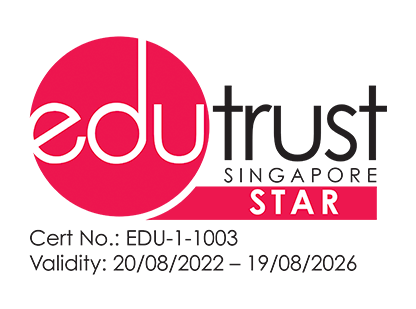Is Attention Management the New Time Management?

A large chunk of our day-to-day life is spent in front of screens. Our eyes zip across different devices in the span of minutes – perhaps even seconds – as we shift our focus and attention between work and play.
To say this constant shifting of focus does not create a less productive environment would be disingenuous.
To Manage Attention or Time?
With the digitalisation of office jobs, your workstation or office table has taken a new form: a laptop. Almost everything you need is just a click away. In this regard, it can be argued that the modern workstation is superior to its predecessors.
Yet, 85% of employees feel that their workplace environments hinder their productivity.1 This is exacerbated when employees have to deal with the lack of efficiency and comfort that comes with traditional workspaces. This inability to achieve proper efficiency may be further worsened by a lack of organisational support and rigid working hours.
Tracking Attention
Unlike time, which is measurable, attention can be difficult to keep track of. Tracking attention is almost impossible as attention itself is an unquantifiable attribute.
However, one can keep tabs on attention through quantifiable systems, with an eye tracker being perhaps the most widely used tool to measure focus. Such devices can precisely track eye movement, but this, too, only provides information concerning covert attention.2
Why Does the Mind Wander?
Psychologist Mihaly Csikszentmihalyi argues that intense focus is possible only when one has clear goals and the capacity to complete the tasks necessary to achieve them. Focus not only requires the ability to do the tasks at hand, but also the ability to deal with distractions that may take you off track.3
How do you simultaneously achieve focus and avoid distractions? The key is to retain attention. Since distractions are an uncontrollable variable, the logical conclusion is that one can pay attention to a task by maintaining their focus.
That seems obvious, but keeping your focus isn’t as simple as you may think. This entails quantifiable traits that can be measured through the four-quadrant model.4
What is the Four-Quadrant Model?
To understand attention management as a productivity method, we first have to understand how attention itself works, both broadly and personally. This brings us to the four-quadrant model.
1. Reactive and Distracted
This is a state that an individual experiences throughout the day. In this state, you may try to focus, and yet, still lack control over your surroundings (uncontrollable variables), so you remain at the mercy of your surroundings. Instagram notifications, Slack pings, phone calls, and Shopee notifications culminate in a force of distraction so large you cannot help but lose focus.
We’re multitasking, or, more accurately, task-switching, throughout the day. For example, you may start a project with the intention of giving it your full attention and completing it, but then face a myriad of distractions.
2. Focused and Mindful
The polar opposite of the previous point (reactive and distracted), the focused and mindful state is one in which you are fully engaged in the task at hand. You are putting effort into centering all your attention on what you have to do.
Essentially, within this state, you’re actively avoiding distractions that may pose the threat of derailing your train of thought. This is the most productive headspace to tap into when completing tasks.
3. Daydreaming
It may seem counterintuitive, but daydreaming can actually be a good thing in the right doses. This is when we are able to tap into our creative side, allowing for ideas and insights to form, and helping us flesh out strategies.
4. Flow
Lastly, there is flow, a deeply focused psychological state in which your brain works differently. This state entails a “losing” of oneself in a given task, the total immersion in a focused state. In other words, your brain has tapped into the “zone” – the perfect state for optimised productivity.
However, one cannot simply enter the flow state, as it is one that cannot be wilfully accessed, but rather, that is slipped into through a prolonged period of focused attention on a singular task.

How Do You Manage Attention?
The first step towards solving a problem is identifying the issue at hand and how it affects us. Now that we’ve gone over the four-quadrant model, we can dive into the solutions.
Bite-Size Your Tasks
Breaking down your tasks into smaller, more manageable pieces simplifies them, negating the clouded judgement that often comes from being overwhelmed due to a chaotic approach to task management.
You can achieve this by creating a to-do list that organises your work according to the time frames you have set. For instance, you have three tasks to complete and each would take roughly one hour, and your total working time until the point of submission is eight hours. Since each task takes an hour, you can strategically complete each task, maintain your quality of work, and submit it by your deadline.
Using the four-quadrant model, you can put together a strategy that maximises the daydreaming, focused, and flow quadrants to optimise your quality of work, while reducing the amount of time you spend on doing the task.
It’s the Work, Not the Reward
It is hard to enjoy work when we’re too focused on the incentive rather than the job itself. One might even presume that a prolonged focus on the eventual reward is sufficient enough motivation to create an environment that encourages productivity.
However, this isn’t necessarily true, as per the four-quadrant model, a constant focus on incentives and rewards renders your focus compromised as your attention is now trained on what's ahead, and not on what's in front of you.
A non-conducive work environment that hinders productivity can arise due to a misplacing of attention on the incentive, even if it’s a self-reward. Due to this constant distraction, attention cannot be focused enough on to slip into the most potent state of all: flow.
Achieving Flow
Flow is a state of immersion, where a person is completely absorbed and engrossed in their work.5 With this state of intense focus, people are able to experience a growth towards emotional complexity, and this can help develop skills that allow for better emotional control and regulation.6
Those who manage to achieve flow tend to enjoy their work, hence maintaining lower levels of stress and higher levels of quality. Other improvements may include:
- Intrinsic motivation
- Engagement and performance
- Skill development and creativity
Examples of situations in which one may access the flow state include:
- Creative pursuits
- Education
- Sports
- Work
How Do You Achieve Flow?
1. Set clear goals
A state of prolonged focus can be achieved when the end goal is clear. Keep your goals simple, and keep them in mind from the start.7 Here are some examples of goals that you can set:
- Use the Pomodoro Technique (25 minutes of focused work followed by a 5-minute break)
- Organise your tasks based on simplest to toughest
- Choose work that you love and let your creative juices flow
2. Eliminate distractions
Rid yourself of distractions. This may include putting your phone on silent mode during work hours.
3. Do what you like
You aren’t going to achieve flow by slogging away at something you dislike, so choose a career or pursuit that interests you, and work on improving yourself in your field of choice.
Your Dream Career Starts Here
At Singapore Institute of Management, we offer various 100% online postgraduate programmes in the three in-demand areas of Business Management and Marketing; Data Science; and, Information Technology.
Our E-Learning programmes are designed to maximise your focus and study outcome, with students studying one subject at a time, guided by experienced academics comprising subject-matter experts.
Take your personal and professional life to the next level with a renewed focus. Contact your dedicated Student Advisor today to learn more about the best programme for you.
References
1 https://www.powerhousegroup.com.au/the-modern-workplace-in-5-surprising-statistics/
2 https://blog.eai-conferences.org/2015/08/06/how-to-measure-attention/#:~:text=The%20use%20of%20an%20eye,provide%20information%20concerning%20covert%20attention.
3 https://www.psychologytoday.com/us/blog/automatic-you/202110/understanding-why-you-lose-focus
4 https://www.linkedin.com/pulse/four-quadrants-attention-management-model-maximize-maura-nevel-thomas/
5 https://www.cgu.edu/people/mihaly-csikszentmihalyi/
6 https://www.verywellmind.com/what-is-flow-2794768
7 https://www.verywellmind.com/simple-tips-for-achieving-goals-3145003





